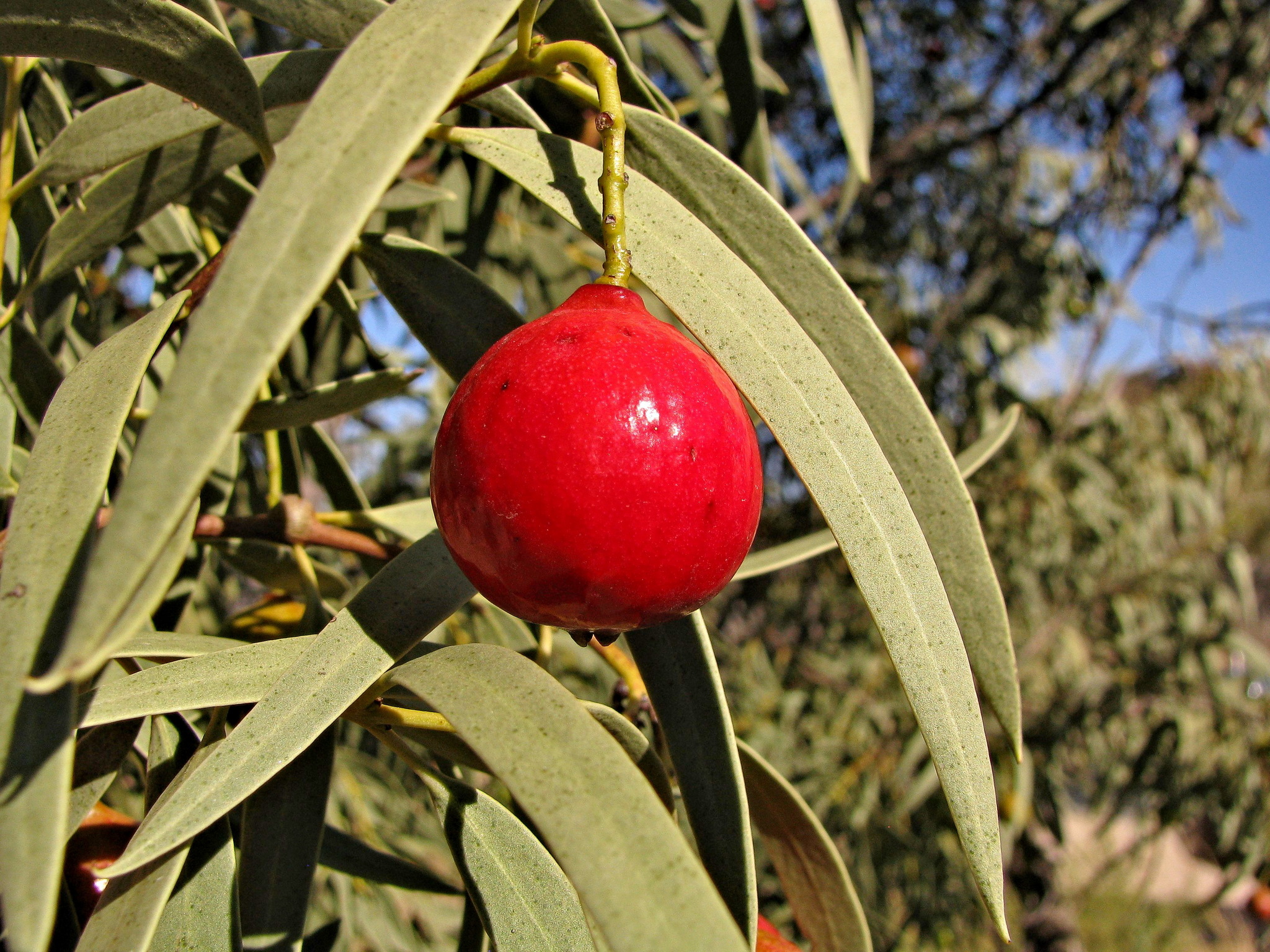
Semi-parasitic herbs or small trees that photosynthesise but tap into the roots of their hosts for water and minerals; a few are branch parasites. Leaves simple, entire, sometimes reduced and scale-like; stipules absent. Flowers regular, bisexual or unisexual, minute. Sepals absent. Petals 3-8 with a succulent cup or narrower tube at the base. Stamens as many as the outer floral segments and opposite them with a nectary disk inside. Ovary inferior or half-inferior, 1(-5)- chambered with 1-5 ovules. Fruit a nut or drupe, usually fleshy and with 1 seed.
Occasionally grown for the fruits but, being a parasite, difficult to establish.
34 genera and 540 species, cosmopolitan. In Australia there are 4 endemic genera comprising 42 species.
Seed.
Santalum album L., Sandalwood Tree, yields an aromatic white timber and the yellow heartwood and roots are the source of sandal oil used as a body oil, for perfumery and cosmetics as well as a form of incense. Timber, oil and edible fruits are obtained from several species; Exocarpos cupressiformis has edible berries. Tanning compounds are extracted from Jodina.
Flowers not differentiated into petals and sepals; fruits (in cultivated plants) red, edible.
Source: (2002). Santalaceae. In: . Horticultural Flora of South-eastern Australia. Volume 3. Flowering plants. Dicotyledons. Part 2. The identification of garden and cultivated plants. University of New South Wales Press.
Updated by: Val Stajsic, June 2019
